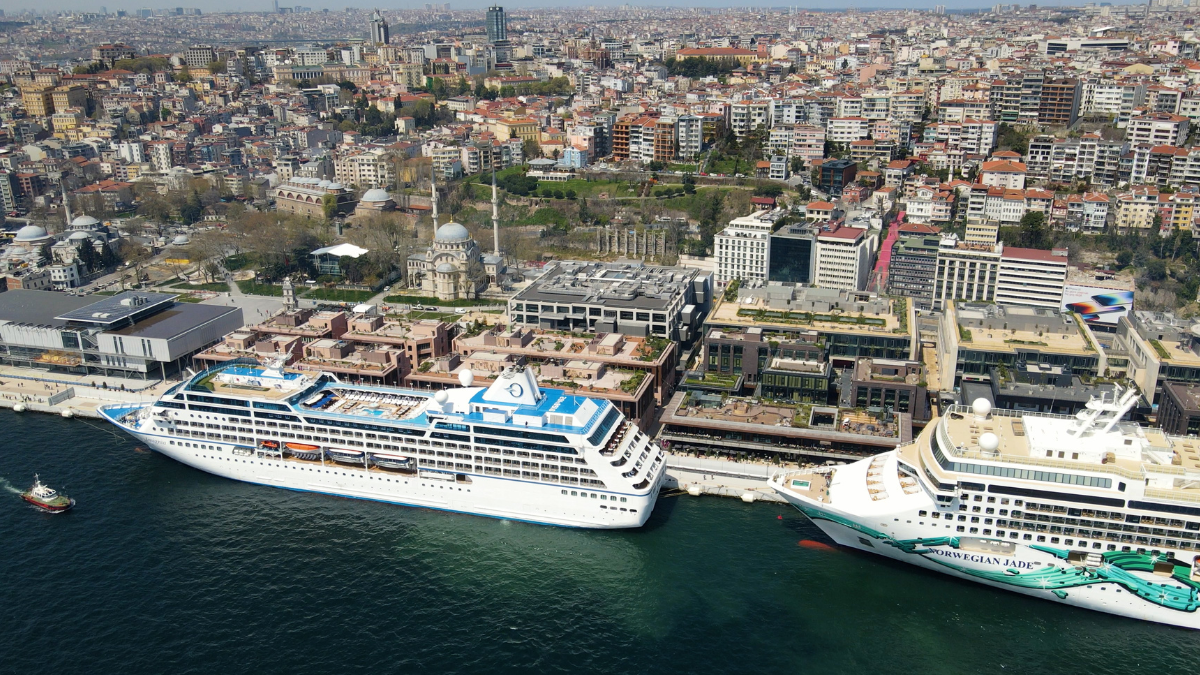Since it opened its doors to visitors in late 2021, Galataport, Istanbul’s renovated cruise liner port, has become a favourite among both tourists and locals. In addition to serving as a home port, Galataport provides visitors with panoramic views of Istanbul’s Old City and includes around 250 shops, countless options for dining, two museums, office space, numerous free exhibitions and concerts, and the newly introduced The Peninsula Hotel.
Brought to life with 1.7 billion dollars in investment, Galataport is an impressive urban regeneration project that revitalised a previously inaccessible area of one of Istanbul’s most vibrant districts, Karaköy. ‘Italians first settled here around a thousand years ago,’ says Galataport CMO Mehmet Bali, ‘and for a thousand years people from various nationalities, religions and races lived here together.‘
According to Bali, Karakoy’s rich history informed the vision of Galataport. It was designed as an accessible, multi-purpose neighbourhood. The renovated space allows, for the first time in two centuries, for locals to enjoy a 1.2 km strip of the Bosphorus coastline. In addition to transforming a closed-off area to a lively shopping district with spaces for the arts, culture and entertainment, Galataport carried out the renovation of four historic buildings. ‘[The buildings] were very worn out and had to be renovated. None of the buildings in the area were earthquake resistant,’ says Bali. ‘On one hand we wanted to guarantee the survival of this district for the next few centuries, and on the other we wanted to open the area to the public. The reason why the area was so forgotten was because it was subject to customs, since its main function was to serve as a cruise port.‘
The world’s first underground cruise ship terminal
To open the coastline to the public, Galataport came up with an innovative solution: a temporary customs area. They implemented a hatch system that is activated when a ship disembarks along the coastline. ‘There are 176 hatches that can be controlled separately,‘ explains Bali. ‘When a cruise ship approaches, we lift the hatches and it becomes a customs area. The passengers are guided to the underground terminal for passport control.‘ The underground terminal extends under the water, creating an arrival hall that can accommodate 15,000 passengers. Designed by Istanbul-based architecture firm Autoban, the underground terminal reflects the architectural characteristics of ancient cisterns, which are among Istanbul’s most beloved historical heritage.
Another goal of the renovation project was to establish Galataport as a home port, to increase the amount of time tourists spend in Istanbul. The dock and the underground terminal were designed to accommodate up to three cruise ships at the same time. Since Galataport reopened its doors to visitors, Istanbul’s home port rate has increased from 15% to 50%, says Bali.
Galataport’s mission to add value to not just the cruise passengers’ experience but also to the local area, informs how they carry out everything, from their social media strategy to how they use data. Through their retail and office spaces, Galataport has relationships with hundreds of brands, and it brings their expertise to its social channels. ‘Urban regeneration projects are carried out to bring value to the local communities’ lives,‘ explains Bali, ‘we abide by this vision in our communications, our events strategy, our architecture. Even if someone is watching a one-minute reels [on our social media], we want Galataport to add value to their life. From fashion content to food, whatever the content might be, we always try to add interesting information. For example, Sait’s menu has a dish called Jumbo Prawns with Pastrami and he talked about the history of pastrami while he was telling the story of the dish.‘
From Kiko to Tag Heuer, adidas and even an exhibition about The Little Prince, a quick look on their Instagram page reveals compelling content from a wide range of brands. ‘We have a lot of assets and we want to be a source of inspiration for people,’ says Bali, ‘and we believe we have. In two years we’ve had close to 30 million visitors.‘
Featured image: Galataport

